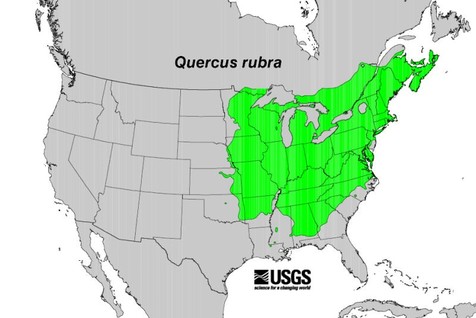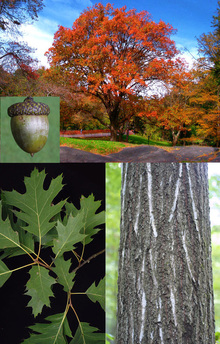Ranging from 90 feet to 140 feet in height, the red oak is a
distinct tree with noticeably red leaves during autumn. It has a wide, spreading canopy
with few far reaching branches. Found growing over southeastern Canada and the
northeastern United States, it reaches west to central Minnesota, eastern
Nebraska and Kansas.
The tree has a single, lobed leaf with seven to eleven pointed or bristly-tipped lobes. The leaves are thin, firm, dull green above, yellow-green below, varying considerably.
The fruit is a large, broad, rounded acorn with a very shallow disk-like cap.
The twigs are small, slender, greenish brown to dark brown. On young branches, the bark is smooth and gray to greenish. On the trunk it breaks into long, narrow, shallow ridges flat and smooth on top. The underbark is light red.
Click the link below to learn more about the wildlife that depends on the red oak for food and shelter.
The fruit is a large, broad, rounded acorn with a very shallow disk-like cap.
The twigs are small, slender, greenish brown to dark brown. On young branches, the bark is smooth and gray to greenish. On the trunk it breaks into long, narrow, shallow ridges flat and smooth on top. The underbark is light red.
Click the link below to learn more about the wildlife that depends on the red oak for food and shelter.
Location |
|

